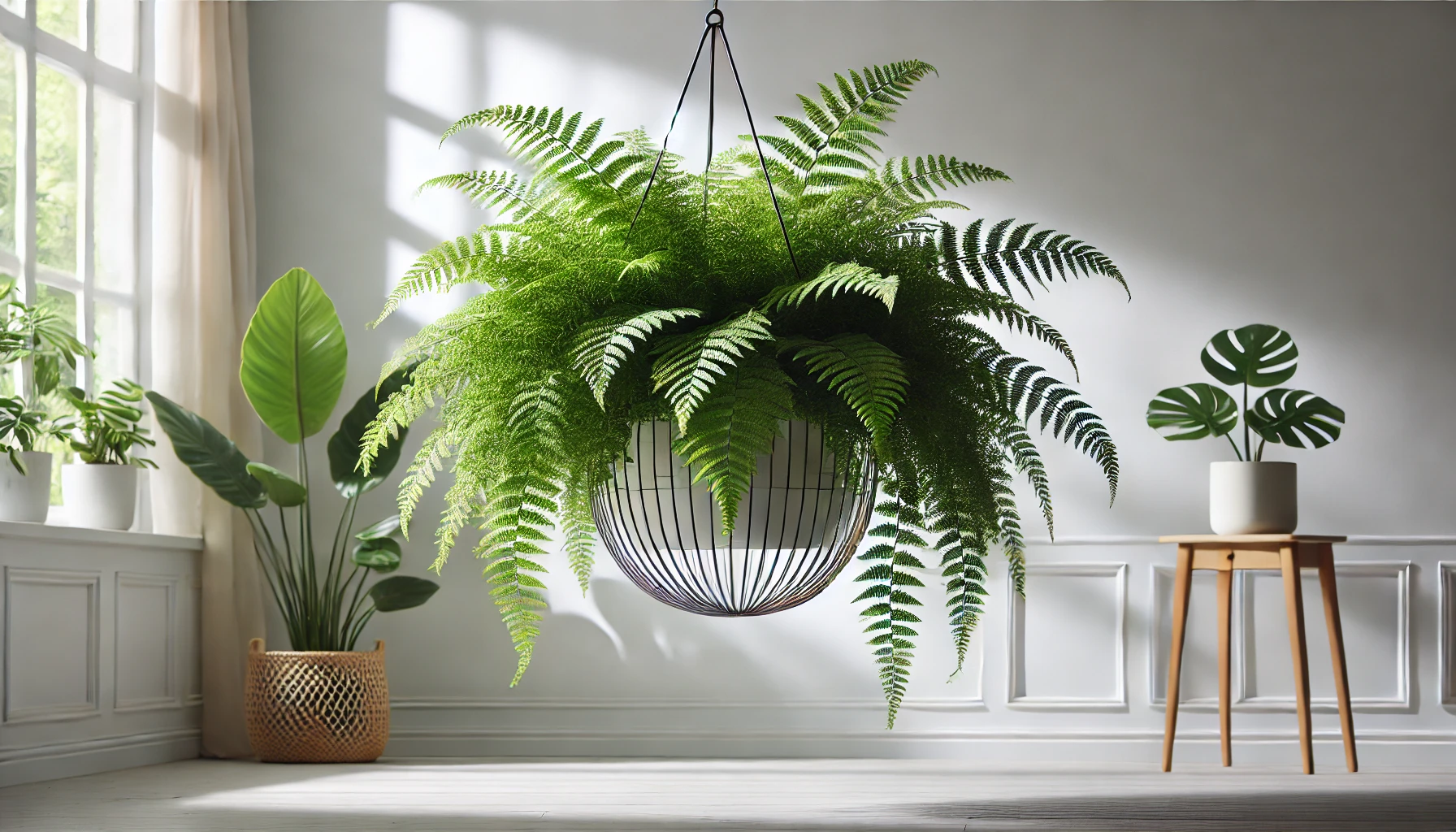
The Boston Fern, scientifically known as Nephrolepis exaltata, is a beloved houseplant admired for its feathery, arching fronds that add a touch of lush greenery to any indoor space. With its elegant, cascading foliage, the Boston Fern makes a perfect addition to hanging baskets or elevated planters. Typically, Boston Ferns can grow up to 2-3 feet tall and wide, making them a substantial yet manageable houseplant.
A Brief History and Ideal Growing Conditions
Native to tropical and subtropical regions around the world, particularly in the Americas and West Indies, the Boston Fern became a popular houseplant in the 19th century. It was widely cultivated during the Victorian era and remains a favorite for its classic beauty and air-purifying qualities. Boston Ferns thrive in warm, humid environments that mimic their natural habitat. They grow best in bright, indirect light but can tolerate some shade, making them versatile for various indoor settings.
Boston Ferns and Pets: Important Information
One of the best things about Boston Ferns is that they are non-toxic to pets. You can enjoy their lush greenery without worrying about the safety of your cats or dogs, making them a great choice for pet owners.
Best Practices for Caring for Your Boston Fern
Caring for a Boston Fern requires a bit more attention than some other houseplants, but with the right care, they can thrive and add a beautiful touch to your home.
Watering and Humidity
Boston Ferns prefer consistently moist soil, but they don’t like to sit in water. Water them thoroughly when the top inch of soil feels dry, and ensure that excess water drains out of the pot. In general, watering a couple of times a week is a good starting point, but you may need to adjust based on your specific environment. These plants thrive in high humidity levels, which can be achieved by using a humidifier, misting the fronds regularly, or placing the plant on a tray with pebbles and water.
Soil, Light, and Temperature
A well-draining, peat-based potting mix is ideal for Boston Ferns. They grow best in bright, indirect light but can tolerate some shade. Avoid direct sunlight, which can scorch the delicate fronds. Boston Ferns prefer temperatures between 60°F and 75°F and should be kept away from cold drafts and sudden temperature changes.
Common Problems and Remedies
Even with the best care, Boston Ferns can encounter some common issues. Browning or dropping fronds can be a sign of dry air or insufficient humidity. To remedy this, increase the humidity around the plant by misting regularly or using a humidifier. Yellowing fronds can indicate overwatering or poor drainage. Ensure the soil is well-draining and adjust your watering schedule accordingly.
Boston Ferns can also be affected by pests such as spider mites and scale. To combat these pests, use a water and mild soap solution or neem oil spray. Regularly inspecting your plant and cleaning the fronds can help prevent pest infestations.
Propagation and Benefits
Propagating Boston Ferns can be done through division. When repotting, gently separate the plant into smaller sections, each with its roots, and plant them in individual pots. This method is not only easy but also a great way to expand your collection or share plants with friends.
Boston Ferns are not only beautiful but also beneficial to your indoor environment. They are known for their air-purifying qualities, helping to remove toxins such as formaldehyde and xylene from the air.
Final Thoughts
Boston Ferns are one of the most classic and beautiful houseplants you can add to your home. Their lush, feathery fronds and air-purifying qualities make them a favorite among plant enthusiasts. While they do require some attention to thrive, the rewards are well worth the effort. With the right care, your Boston Fern can become a stunning focal point in your home. So why not add a Boston Fern to your collection and enjoy the beauty and benefits it brings?
Stay connected with the world of plants! Subscribe to Phylofy for expert gardening tips, DIY projects, and eco-friendly inspiration. Join our community and nurture your love for nature. Don’t miss exclusive content and updates. Subscribe now!



